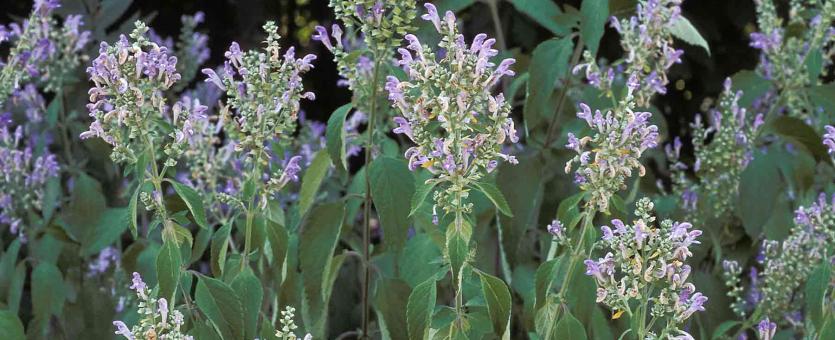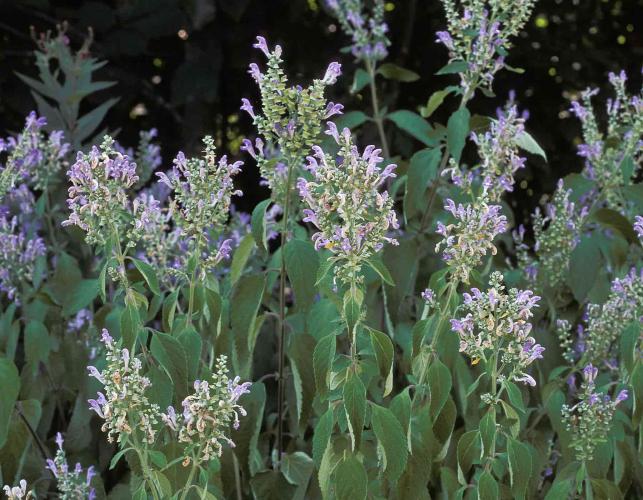
A perennial with branching, 4-angled stems and short, gray hair. Flowers in several terminal or near-terminal racemes, purplish blue. The arching upper lip is the “skullcap”; the lower lip is flat and 3-lobed. Blooms June–September. Leaves opposite, to 6 inches long, the largest toward center of stalk, ovate-lanceolate with a rounded base and coarse, blunt teeth, covered by fine hair. According to some, it is the seed-bearing structure that looks like a cap.
Height: 2½–3 feet.

Ozarks and north-central counties; mostly in the southern half of Missouri.
Habitat and Conservation
Occurs in rocky, open woods, wooded slopes, streamsides, along ledges of bluffs, ravines, thickets, roadsides, and railroads.
Human Connections
This is a deserving native plant for the wildflower garden; it is showy, easy to grow, and tolerates dry conditions.
Ecosystem Connections
Bumblebees are the primary pollinators, though many insects eat the nectar. Because of the distasteful oils in this mint, few mammals eat this plant.























